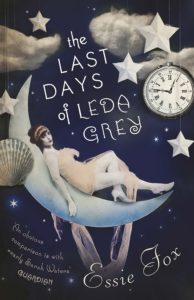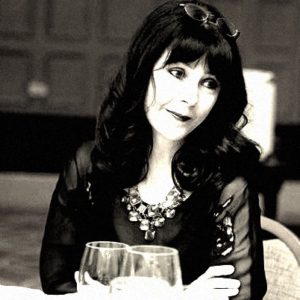Interview with Essie Fox
How did you come across this story? What inspired you to write about it?
The Last Day of Leda Grey is the story of a reclusive old woman who once starred in Edwardian silent films. Leda is entirely fictional, but her youthful image was inspired by a picture of Theda Bara I once saw in a junk shop window – with Theda dressed for her starring role in a film called Cleopatra. Sadly that film has now been lost, but many photographs remain of the very first vamp of the silent screen. They, and some myths and legends based on Egyptian mummies, inspired me to write the story of an actress whose flickering eerie films begin to haunt her real life.
What were your main sources for your research? How did you organize everything? (That is, got any tips for fellow writers?)
In the years leading up to the First World War the film business was in its infancy. With many professional photographers, and even stage magicians being drawn into the industry there were often incredible special effects. All the wonders and marvels of double exposures, or theatrical smoke and mirror tricks in which these directors were well versed.
However, before writing the fantasies I needed to know the real facts. I read general Edwardian histories, then more specific details about people who’d worked in the industry – all of which can be found at end of my novel. But, perhaps the most valuable resources were all the old photographs and stills I found in books, or else online. The BFI has a growing list of silents that they have digitized, as does the Library of Congress. Many of these are on Youtube today. I recommend Georges Méliès!
What were the biggest challenges you faced either in the research, the writing, or structuring the plot?
The biggest challenge was the structure. Although the book looks back in time to events in Leda’s Edwardian youth I decided to set the main story in 1976, when she’s visited by a journalist who has come across a photograph of Leda in a silent film. He can’t get her image out of his mind, and when he discovers she’s still alive, having hidden away as a recluse in an isolated cliff top house for more than half a century, he is compelled to track her down in the hope of obtaining an interview.
As he is my main narrator I had to find a way for her to tell him the story of her life – with many mysterious clues to solve. In the end, I revealed much of this through their present day conversations – or by Leda showing him old films – or through memoirs that she lets him read; what she calls her Mirrors. Mirrors, because they reflect the past. But they may not always tell the truth.
Every writer has to leave something on the cutting floor. What’s on yours?
I cut out so much of the backstory related to Ed, my young journalist – so much that I think I could write a whole new book based on his memories. Perhaps I will. I know I’m finding it hard to let Ed Peters go…
Tag you’re it! What historical fiction author do you most admire? Why? Now forward these questions to him/her and we’ll share their answers next week!
I am tagging Anna Mazzola whose debut Victorian Mystery, The Unseeing, is based on a true sensational crime. The novel has many twists and turns, and the finely tuned period detail is there but never outweighing the essence of the characters and the story told.
 Essie Fox lives in London. Having worked in publishing and design she now writes historical novels published by Orion Books. Her debut, The Somnambulist, was shortlisted for the National Book Awards. Her latest, The Last Days of Leda Grey, is essentially a ghost story with the theme of Edwardian silent film.
Essie Fox lives in London. Having worked in publishing and design she now writes historical novels published by Orion Books. Her debut, The Somnambulist, was shortlisted for the National Book Awards. Her latest, The Last Days of Leda Grey, is essentially a ghost story with the theme of Edwardian silent film.
Missed our previous Five for Friday? Check out our interview with Ami McKay about The Witches of New York or our interview with Eva Stachniak about her book The Chosen Maiden. Still craving some tidbits about fabulous women? Read our post about “Fashion as Resistance in WWII France” by Anne Sebba.


